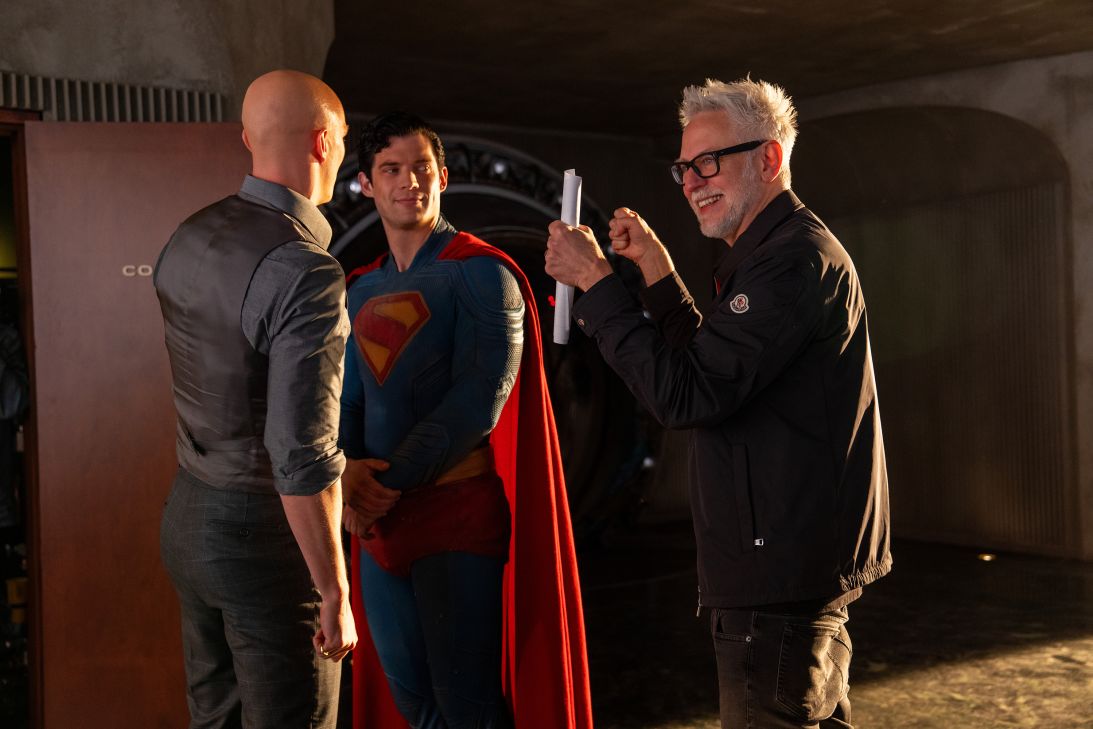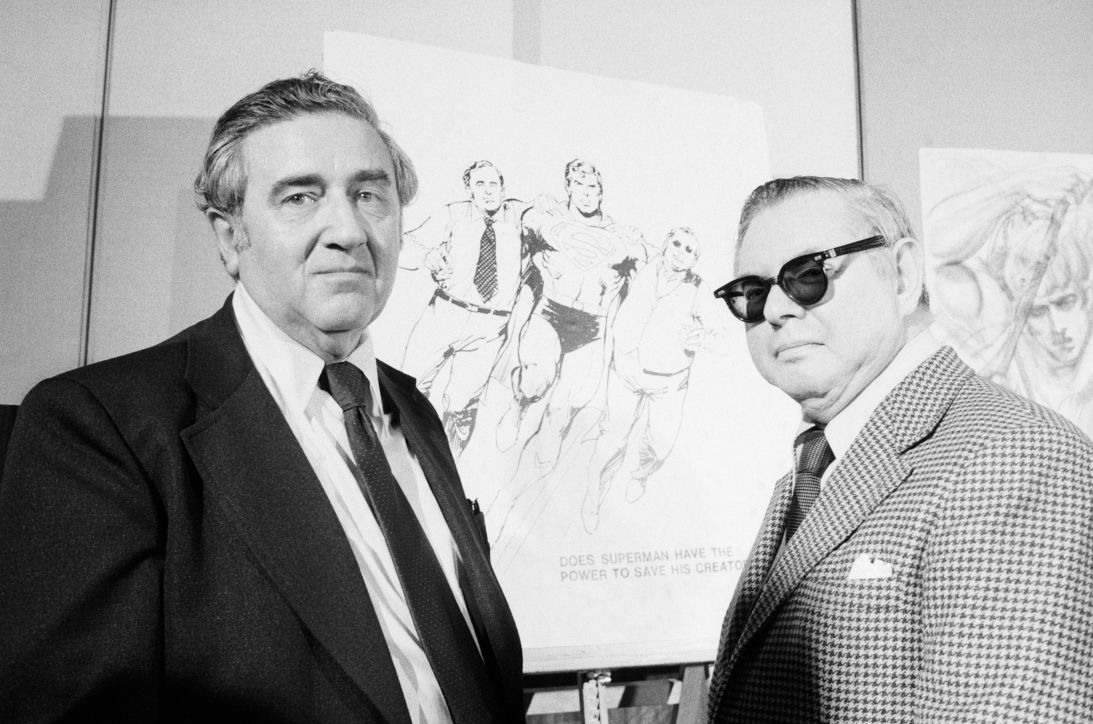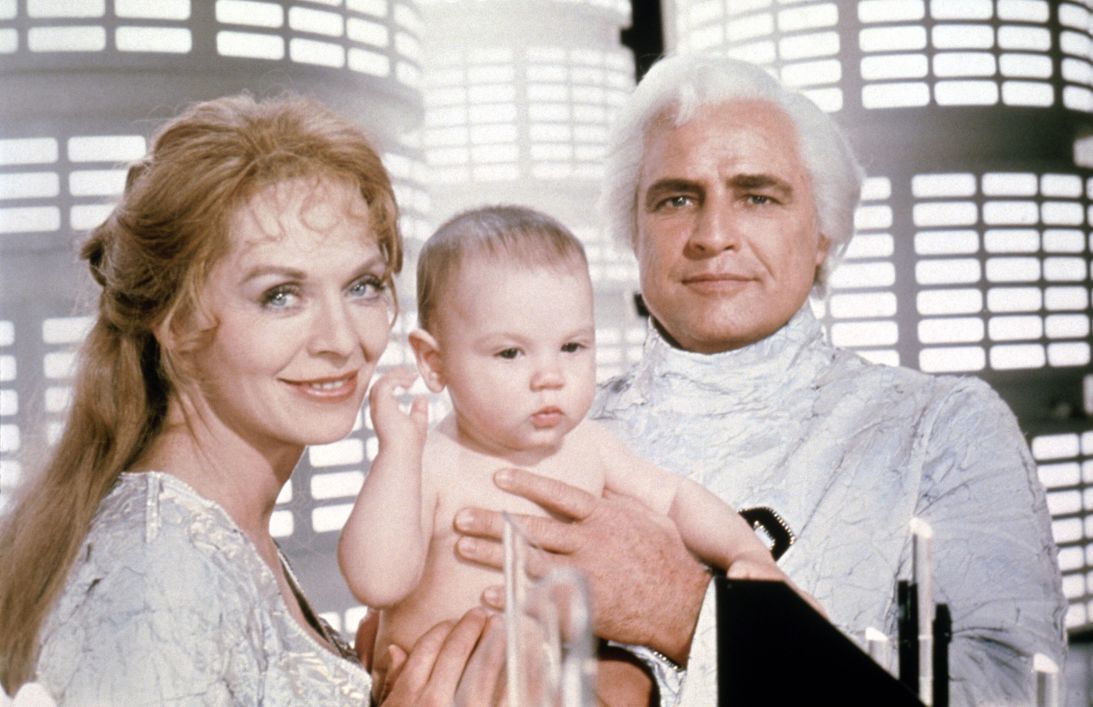A baby arrives in America from a home in turmoil. A family in Kansas raises him. And he struggles to balance two identities.
Comic books, TV shows and films have repeatedly recounted these details from Superman’s backstory over the past 87 years. But the director of the latest big-screen adaptation drew backlash recently when he stated something that’s been said many times before: Superman is an immigrant.
“I mean, Superman is the story of America,” director James Gunn told The Times of London. “An immigrant that came from other places and populated the country, but for me it is mostly a story that says basic human kindness is a value and is something we have lost.”
Coming as the Trump administration steps up its immigration crackdowns, the comments quickly sparked criticism from right-wing media personalities. A Fox News banner blasted the new movie as “Superwoke” as pundits offered their takes.
“We don’t go to the movie theater to be lectured to and to have somebody throw their ideology on to us,” said former Trump adviser Kellyanne Conway.
Dean Cain, an actor who starred for years on TV in “Lois & Clark: The New Adventures of Superman” and is now a conservative commentator, told TMZ he didn’t like Gunn’s comments and speculated that the director’s decision to invoke immigration while promoting the film could be a costly mistake.
So far, it hasn’t been. The movie, released by CNN’s parent company Warner Brothers Discovery, finished No. 1 on its opening weekend with $122 million in domestic ticket sales and continues to draw large audiences.

And longtime fans and historians of the comic books note that Gunn’s comments weren’t superimposing a new storyline on the beloved hero.
“The idea of Superman being an immigrant, or maybe a refugee, has been part of the character’s mythos since the very beginning. It’s not something he invented or tried to shoehorn in,” says Danny Fingeroth, author of “Superman on the Couch: What Comic Book Heroes Really Tell Us About Ourselves and Our Society.”
The first Superman story, published in 1938, stated he was sent to Earth from Krypton, a fictional doomed planet.
“It makes him not an immigrant of choice. It makes him an immigrant of necessity…a refugee,” Fingeroth says. “He’s someone who comes to Earth and to America, to then blend in and become as American as mom, the flag and apple pie.”
And, Fingeroth says, there are a lot of good reasons why these details are such a key part of Superman’s story.
Take the comic’s creators, for example.
Artist Joe Shuster and writer Jerry Siegel were both the children of Jewish immigrants who’d fled rising antisemitism in Europe.
“Just given their backgrounds and their sympathies, I think it’s always been important that Superman comes from somewhere else,” Fingeroth says.
The Cleveland-based duo wrote Superman’s story as World War II loomed. The first page of his story describes him as “champion of the oppressed.”

“The clouds of fascism are rolling through Europe. There’s echoes of it here in America … and Superman’s early adventure are fighting for the little guy, fighting for abused women, fighting for exploited mine workers, fighting against corrupt politicians,” Fingeroth says.
Even before America was fighting Nazis in World War II, Superman was fighting them on comic book pages, he says.
Through it all, “Superman is the immigrant embodying the best of American qualities, even though he’s from somewhere else.”
What advocacy groups and professors have seen in Superman
It’s a connection historians and immigrant rights advocates have made, too.
More than a decade ago, comic book historian Craig This organized a panel at Wright State University highlighting the immigrant backgrounds of Superman and Wonder Woman. The idea resonated with the college students he was teaching at the time, he says.
“People were coming to this large public research university, maybe thinking that they were an outsider, and then said, ‘Oh, wow, look, I can see these individuals as role models. I want to try and fit in. But really, it’s going to be my differences that make me survive and be successful, not just here on a college campus, but also here in the United States.’”
In 2013, the organizations Define American and the Harry Potter Alliance launched a social media campaign inviting people to share selfies and their family’s immigration stories with the hashtag #SupermanIsAnImmigrant.
Last week that campaign’s creators pushed back against critics who’ve been accusing Gunn of politicizing his take on Superman.
“You can’t politicize the truth,” Define American founder Jose Antonio Vargas and narrative strategist Andrew Slack wrote in The Hollywood Reporter. “Superman has been an ‘illegal alien’ for 87 years.”
A one-time undocumented immigrant himself, Vargas says today he sees an even more important message in the superhero’s story.
“I think for the first time, because of this movie, because of what’s happening in the country … I have people who have never talked to me about immigration talking to me about immigration,” he says. “So we have people’s attention. Now I think the question is, what are they going to do?”
Of course, Superman’s origin is just one part of his story. And in the initial comic, it was also a convenient plot device, Fingeroth says, allowing the authors to explain his powers.
In some versions, Fingeroth says, “Superman’s immigrant status is not mentioned.” The hero could be from Metropolis or Kansas or anywhere, “depending on the era, depending on the creators.”

Each version of Superman comes with its own plot twists. In the new film, for example, the backstory of the superhero’s parents takes an unexpected turn.
Superman sometimes changes with the times. And sometimes different audiences perceive him differently.
Many superheroes are outsiders. And one common thread that gives them such staying power is that people from many different walks of life connect with the characters, says Fingeroth, a longtime editor of Spiderman comics.
“Their mythos and storylines and origins speak to various aspects of the human condition, and that makes them appealing. Their adventures are enjoyed by people from a wide variety of political and social and religious backgrounds,” he says. “And yet, the myths are so powerful that they all take it as their own.”

In other words, all of us can see ourselves in Superman. And that may be a reason why so many people have such strong opinions about the character even today.
Last week the White House’s social media accounts shared an AI-generated image based on the new movie’s poster, depicting President Trump in the title role.
A few days later, though, it wasn’t the Man of Steel that the Trump administration referenced on social media when it drew a connection between a beloved sci-fi character and today’s undocumented immigrants.
Instead, the Department of Homeland Security shared the iconic image of ET’s bicycling silhouette. The text superimposed over the moon: “GO HOME.”


